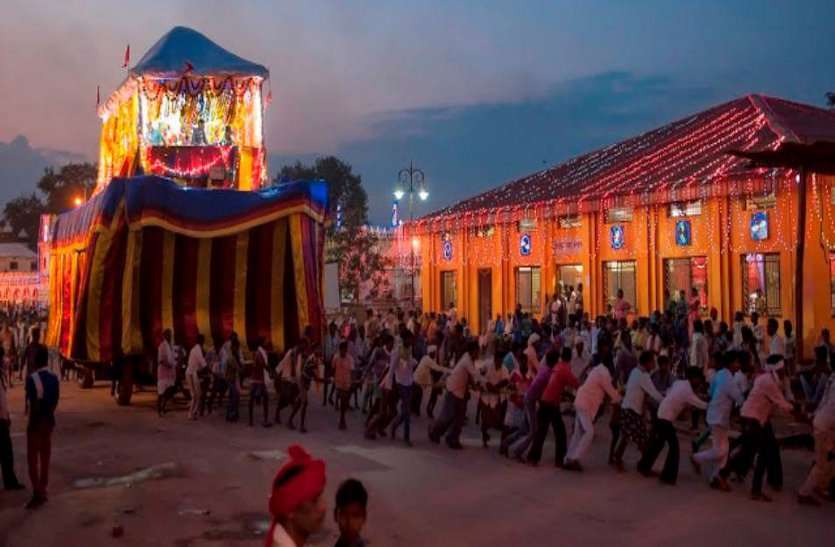In school, we all learned that deep within Earth, a fiery core as hot as the sun’s surface melts parts of the mantle to form magma. This magma sometimes forces its way through Earth’s crust, creating what we know as volcanoes. Among 1,350 potentially active volcanoes in the world, India is home to just one. This unique geological feature is the sole active volcano in the Indian subcontinent and the only active one in the volcanic belt stretching from Sumatra to Myanmar.
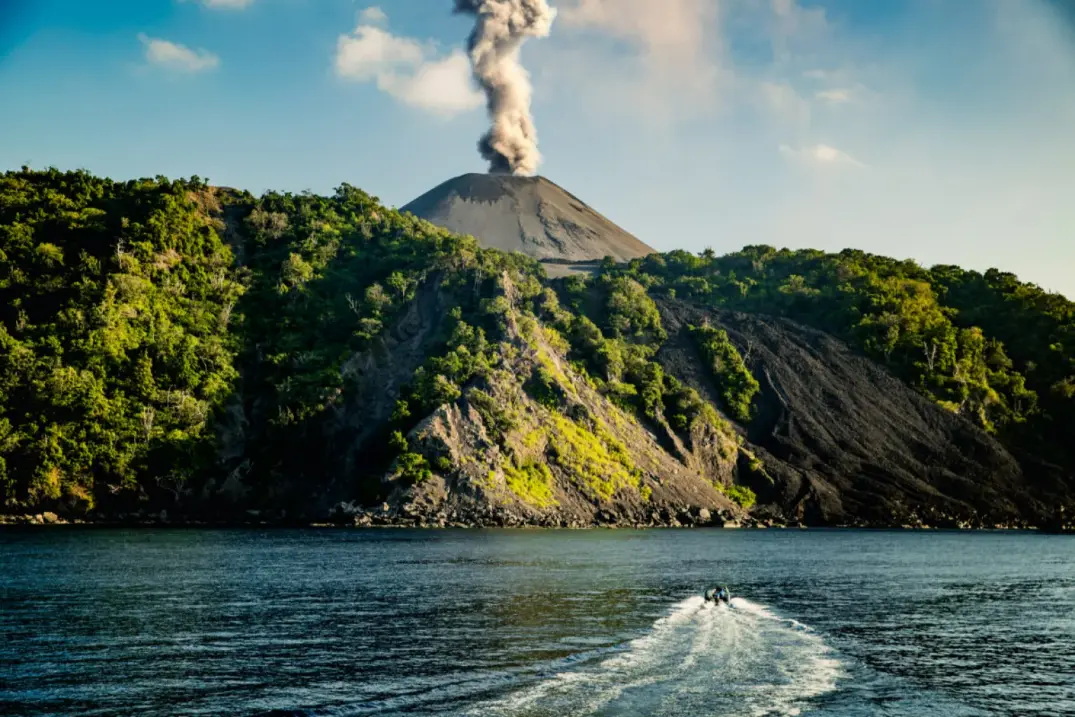
If you are eager to see it, all you have to do is book a cab in Chennai and board a charter boat from Chennai Port. The journey to Port Blair, the capital of the Andaman and Nicobar Islands, takes about 58 hours. From Port Blair, set out on a four-hour sail to witness India’s only active volcano, Barren Island volcano. This island lies on the seismically active tectonic plates in the Andaman Sea and can only be seen from afar while on a ship and no one is allowed to disembark. Here’s everything you need to know about the only confirmed active volcano located in South Asia.
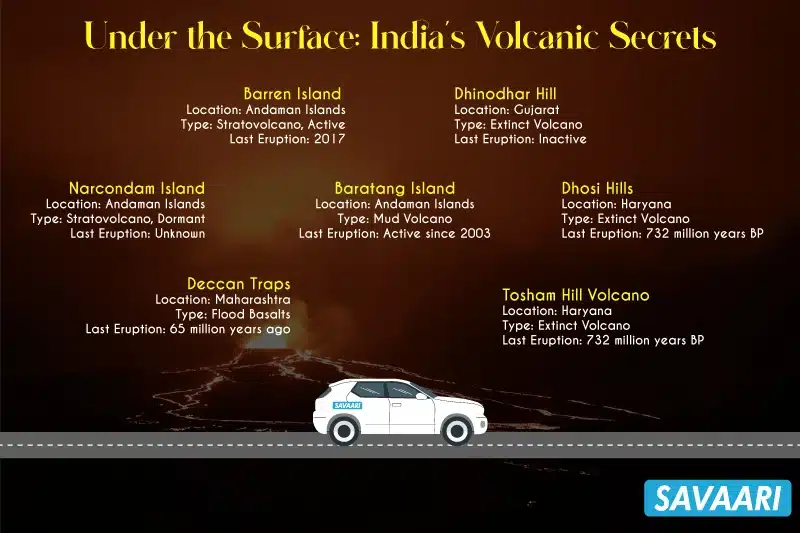
Myths and legends surrounding Barren Island Volcano
According to local folklore, the barren island was once the formidable dwelling of a demon named Rakshas. A figure of darkness and power, Rakshas ruled until the arrival of Lord Hanuman. In a tale of courage and divine intervention, Lord Hanuman vanquished the demon, liberating the island from its malevolent grasp.
But the mythology doesn’t end with battles and victories. Barren Island is also revered as the domain of Agni, the Hindu god of fire. This connection is not just symbolic; it reflects the fiery heart of the volcano itself, a natural embodiment of Agni’s eternal flame. The indigenous tribes of the Andaman and Nicobar Islands hold a deep spiritual connection to this place. For them, the volcano is not just a geological feature but a sacred space, a dwelling for the spirits of their ancestors.
Journey to the uninhabited – Barren Island’s untamed beauty
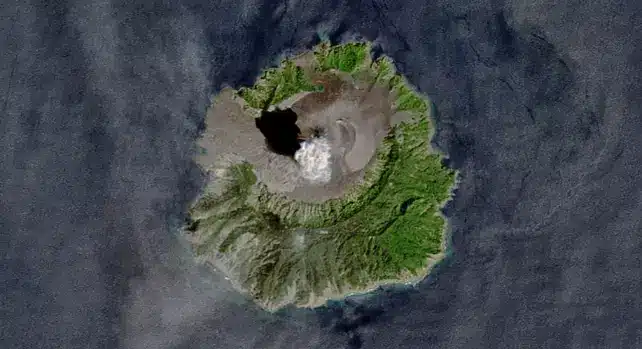
Barren Island is guarded under protection due to its ecological and geological significance. To explore its wonders, adventurers must seek special permission from the local forest department. While setting foot on the island is off-limits due to the potential danger posed by the active volcano, the spectacle from the surrounding waters is breathtaking.
The volcano itself, with its crater not far from the shore, presents a dramatic landscape. The island’s dark rocks lend the sand a unique dark purple hue, creating a stunning contrast with the sea’s vibrant blue and the teeming, colourful life beneath the waves.
Despite its name and the absence of human inhabitants, Barren Island is far from lifeless. A resilient community of goats, bats, birds, and other small creatures has carved out an existence among its rugged terrain and sparse vegetation.
The volcanic eruptions of Barren Island
Barren Island’s active volcano is a remnant of ancient volcanic cones now partially submerged in the Indian Ocean. This island has a history of eruptions dating back to 1787. Over the years, it has erupted more than ten times, with the latest spectacle occurring in 2022.
The 1991 Awakening
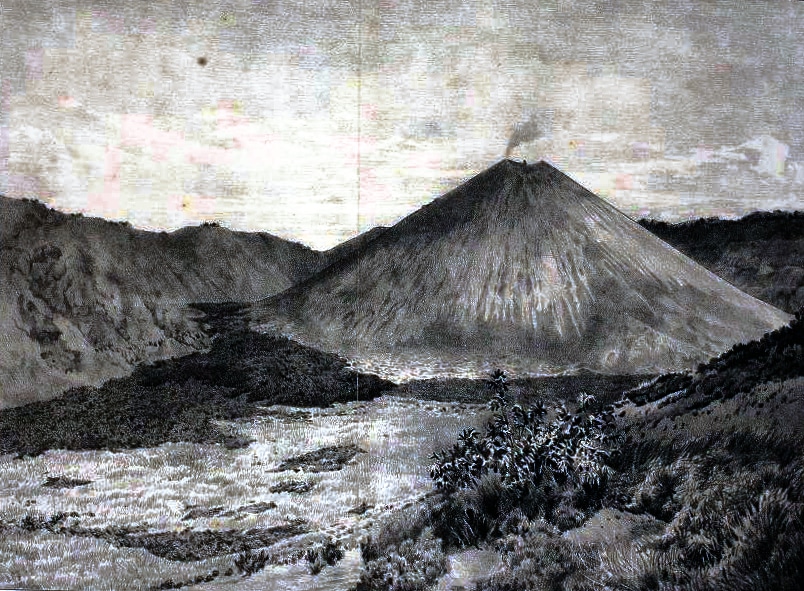
The eruption of 1991 marks a significant chapter in Barren Island’s volcanic narrative. After lying dormant for roughly one and a half years, the volcano reawakened with a display of ash plumes, Strombolian explosions, and lava flows that reached the sea, altering the island’s landscape in profound ways. This event emphasized the unpredictable and potent nature of the volcanic activity on Barren Island. The volcano’s last eruption was nearly a decade ago, underscoring a period of relative calm since the dramatic events of the early ’90s. Its first recorded eruption traces back to 1787, setting a precedent for the island’s long history of volcanic activity.
At the edge of tectonic forces
Strategically located on a volcanic belt at the juncture of the Burmese and Indian tectonic plates, Barren Island volcano eruptions are magnified in intensity and effect. The 1991 eruption, lasting several months, is one of the most significant events in the island’s recent volcanic history, showcasing the dramatic impacts of tectonic movements.
The 1994-95 lava dome formation
Between 1994 and 1995, Barren Island volcano was the site of another notable eruption that resulted in the formation of a large lava dome, rising to 250 meters. This event was characterized by the emission of ash plumes and pyroclastic flows, highlighting the ongoing volcanic activity and the island’s ability to reshape its landscape dramatically.
Linked to a tsunami’s cause
Barren Island’s geological significance is further underscored by its location above the fault line that triggered the 2004 tsunami. This connection emphasizes the complex and interconnected nature of volcanic and seismic activities in the region.
Research and insights on Barren Island Volcano
The Geological Survey of India has kept a close watch on the Barren Island Volcano, especially after its 2018 eruption. Known to erupt every 10-15 years, it has attracted the attention of international researchers.
A significant breakthrough in the study was establishing a connection between the volcano’s eruptions and regional earthquakes, as volcanic eruptions can cause earthquakes. The Physical Research Laboratory highlighted how these eruptions could trigger seismic activities, enhancing our grasp of the geological dynamics at play.
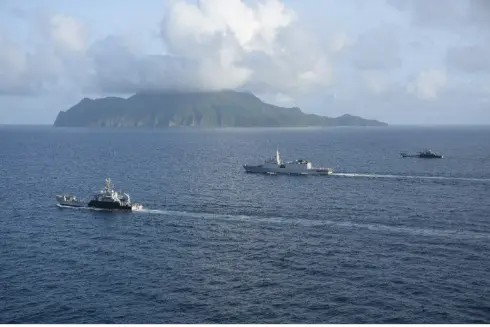
Further investigations have focused on analyzing the volcano’s eruption frequency. Utilizing remote sensing, researchers have unveiled that Barren Island volcano experiences eruptions more often than was previously believed. Such insights have been crucial in refining the monitoring techniques for the volcano, leading to more accurate forecasts of its activity.
Research has also extended to the environmental repercussions of the volcano’s eruptions, particularly concerning the release of sulfur dioxide into the atmosphere. This has potential adverse effects on air quality and climate. Efforts are ongoing to understand and possibly mitigate the environmental impacts of these emissions. The scientific exploration has shed light on its patterns and environmental influences. These findings have not only enhanced the capability to monitor and predict its eruptions but also deepened our knowledge of the geological phenomena shaping the region.
Why does nobody live on Barren Island?
Barren Island is unsuitable for human living due to its active volcanic environment, lacking any permanent human settlements or appeal as a tourist destination. Historically, however, it has experienced some human impact. In the 19th century, goats were introduced by the British, and these animals have thrived, negatively affecting the island’s natural ecosystems.
Despite its inhospitable conditions, Barren Island has become a focal point for scientific investigation. Researchers are drawn to its unique biodiversity and volcanic activities. Additionally, there’s interest in exploring the potential of harnessing geothermal energy from the volcano. While past human activities have left a mark on the island, its role as a centre for scientific research remains significant.
How to plan your trip to Barren Island?
Planning a visit to Barren Island is an adventure of a lifetime. This unique destination offers not just a glimpse into the raw beauty of nature but also a deep dive into the fascinating geological and cultural history of the region. Before embarking on this journey, it’s essential to understand that visiting Barren Island volcano requires careful planning and adherence to regulations, given its protected status and the inherent dangers of volcanic activity. Here’s how you can plan your trip to this remote and mesmerizing island:
1. Obtain the necessary permits
Before you can travel to Barren Island, securing a tourist permit from the Indian government is mandatory. The permit fee is approximately INR 1000 for Indian nationals and INR 3500 for foreign nationals. These permits are crucial for accessing the protected area and ensuring your trip is legally sanctioned.
2. Start from Chennai
Your gateway to Barren Island begins at Chennai. For a comfortable and hassle-free start to your journey, consider booking an airport savaari or cab to Chennai Airport. From there, you can also book a cab to Chennai Port, where your maritime journey to the Andaman Islands will commence.
3. Travel to the Andaman Islands
Once at Chennai Port, you have a couple of options to reach the Andaman Islands. The most common entry points are Port Blair and Havelock Island. Although there are no direct commercial services to Barren Island, these locations serve as your launching pads.
4. Charter boat booking
In the Andamans, several travel agencies offer charter boat services to Barren Island. A charter trip can cost between INR 130,000 to 150,000 and usually accommodates up to eight people, making it an ideal option for group travel. Remember, government ferries do not service Barren Island, so private charters or seaplanes are your only options.
5. Budget for private ferries or seaplanes
For those looking for a different experience or travelling in larger groups, private ferries or seaplanes to the vicinity of Barren Island can be arranged. These options are pricier, ranging from INR 1 to 2 lakhs, emphasizing the importance of sharing costs for a more affordable journey.
6. Weather and scheduling
The Andaman Sea’s weather is unpredictable, and conditions can change rapidly. It’s vital to stay updated on the weather forecast and be prepared for possible alterations in your schedule. Weather changes can affect the availability and cost of ferry services to Barren Island, so flexibility in your travel plans is key.
7. Water activities and sightseeing
While direct access to Barren Island is restricted, the journey there and in the surrounding waters offers opportunities for water activities. If your charter service permits, indulge in snorkelling or diving to explore the rich marine life en route to the island.
8. Environmental and safety considerations
Given Barren Island’s status as an active volcano and a protected natural area, visitors must adhere to environmental guidelines and safety protocols. This includes not attempting to disembark on Barren Island itself and maintaining a safe distance, as directed by your charter operator.
Charting your course – The best time to visit Barren Island
The best time to visit Barren Island in the Andaman Islands is during the dry season, which runs from November to April. This period is characterized by pleasant weather conditions, with minimal rainfall and calm seas, making it the most suitable time for travel and exploration. The temperature during these months typically ranges from 20 to 30 degrees Celsius (68 to 86 degrees Fahrenheit), offering a comfortable climate for visitors.
Visiting Barren Island during this window not only ensures easier and safer boat transportation but also enhances the experience of any water-based activities, such as snorkelling or viewing the marine life from the boat, given the clearer waters and better weather conditions. Additionally, the reduced likelihood of rain and stormy weather during this time minimises potential disruptions to travel plans and allows visitors to fully enjoy the natural beauty and geological wonders of Barren Island without the hindrance of adverse weather conditions.
Beyond the lava – Exploring the Andaman and Nicobar Islands
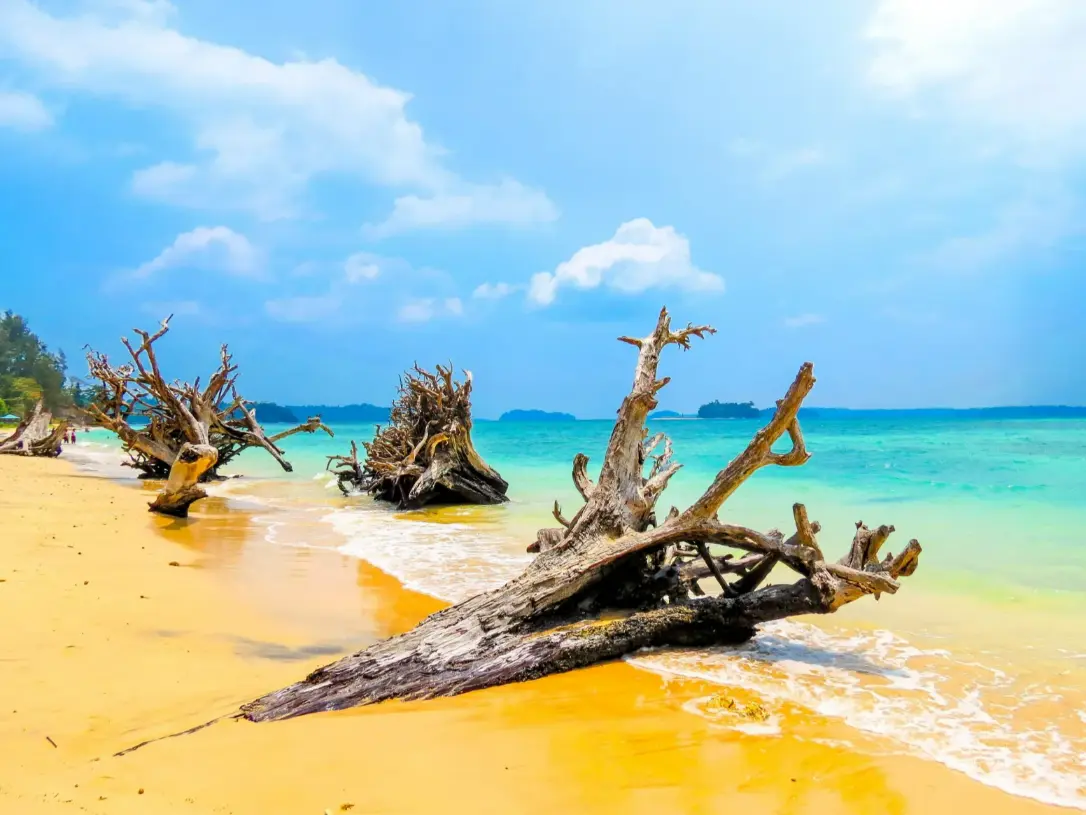
After basking in the magnificent sight of the Barren Island volcano, immerse yourself in the endless beauty and activities that the Andaman and Nicobar Islands offer. After soaking in the allure of Barren Island volcano, extend your adventure by exploring the beauty of the Andaman and Nicobar Islands with this detailed guide.
Cellular Jail – A Glimpse into India’s Colonial Past
The Cellular Jail, often referred to as ‘Kala Pani’, stands as a significant historical site in Port Blair, the capital city of the Andaman and Nicobar Islands. This colonial prison, built by the British, served as the unfortunate home to numerous Indian freedom fighters, including Batukeshwar Dutt, Yogendra Shukla, and Vinayak Damodar Savarkar, among others. A visit to Cellular Jail is not just a journey back in time; it’s a tribute to the resilience and courage of India’s revolutionaries.
Scuba Diving Adventures in Andaman
The Andaman and Nicobar Islands are a haven for scuba diving enthusiasts, offering some of the most spectacular underwater experiences. Havelock Island, in particular, stands out as a favorite diving destination, catering to divers of all skill levels. Whether you’re a beginner or an experienced diver, the island’s diverse marine life and clear waters promise an unforgettable diving experience. For those new to the sport, introductory dives start at approximately INR 3,500 for a 30-minute underwater adventure.
Radhanagar Beach – Asia’s Finest
Crowned ‘Asia’s Best Beach’ by TIME magazine in 2004, Radhanagar Beach on Havelock Island is a vision of paradise with its crystal-clear turquoise waters and soft, white sandy shores. Stretching over 2 kilometers, the beach offers a serene escape, perfect for soaking in the sun and enjoying the tranquil beauty of the Andaman and Nicobar Islands.
Elephant Beach – A Water Sports Hub
Known for its exquisite coral reefs and captivating blue waters, Elephant Beach epitomizes the tropical allure of the Andaman and Nicobar Islands. This beach is a hotspot for tourists seeking adventure, offering an array of water sports activities such as snorkeling, swimming, banana boat rides, speed boating, and diving. The vibrant marine life and stunning coral formations make Elephant Beach an essential stop for anyone visiting the islands.
Volcanoes in India besides the Barren Island volcano
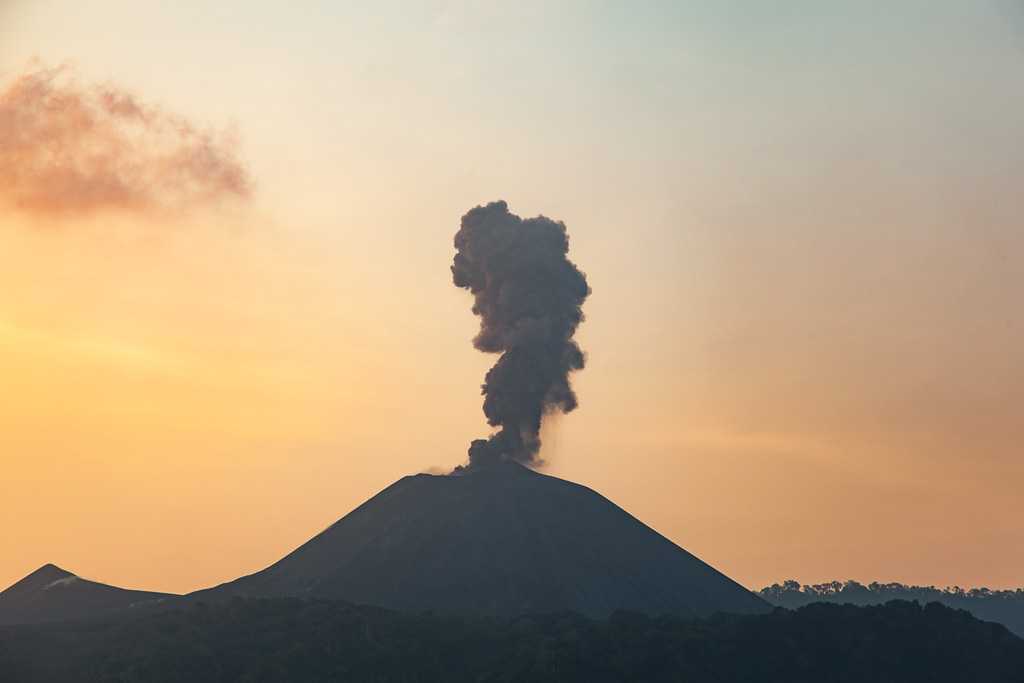
If you are wondering about the active volcanoes in India, the country also hosts several volcanic formations besides the active Barren Island volcano. Though most of these are dormant or extinct, they contribute significantly to the local ecosystems by enriching the soil with minerals, fostering agriculture, and attracting tourists due to their geological intrigue. Here’s a compilation of some volcanoes in India:
Narcondam Island
Narcondam Island is a small, remote volcanic island in the Andaman Sea, known for its challenging accessibility and pristine natural environment.
- Location: Andaman Islands
- Type: Stratovolcano, Dormant
- Size: Approximately 6.8 square kilometers
- Accessibility: Limited, with only eight recorded visits
- Last Eruption: Unknown
Deccan Traps
The Deccan Traps are extensive volcanic basalt flows covering much of the Deccan Plateau, offering a rich field for geological study.
- Location: Maharashtra
- Type: Flood Basalts (not a traditional volcano)
- Area: About 500,000 square kilometers
- Features: Step-like formations of solidified lava
- Last Eruption: 65 million years ago (not in 2007, which seems to be an error)
Baratang Island (Ranchiwalas Island)
Baratang Island is known for its unique mud volcanoes, providing a fascinating natural spectacle and a glimpse into subterranean geological processes.
- Location: Andaman Islands
- Type: Mud Volcano
- Area: 242.6 square kilometers
- Accessibility: Via local bus or taxi to Nilambur Jetty, followed by a 15-minute boat ride
- Last Eruption: Continuously active since 2003
Dhinodhar Hill
Dhinodhar Hill is an extinct volcanic feature in Gujarat, offering panoramic views and insights into the region’s volcanic past.
- Location: Gujarat
- Type: Extinct Volcano
- Elevation: Approximately 386 meters
- Accessibility: Accessible via Bhuj, Devpur-Vithon, or Nakhatrana-Virani routes
- Last Eruption: Inactive
Dhosi Hills
Dhosi Hills are renowned for their geological and historical importance, representing one of the ancient Vedic period sites.
- Location: Haryana
- Type: Extinct Volcano
- Significance: Part of the Aravalli Range, with igneous rock formations
- Accessibility: Easily accessible by road
- Last Eruption: 732 million years BP
Tosham Hill Volcano
Tosham Hill is another extinct volcanic site within the Aravalli Range, offering opportunities for geological exploration and leisurely visits.
- Location: Haryana
- Type: Extinct Volcano
- Elevation: About 207 meters
- Features: Igneous rock formations, part of the Aravalli Range
- Accessibility: Safe and easily reachable by road
- Last Eruption: 732 million years BP
These are the names of volcanoes in India. Despite their dormancy or extinction, they play a crucial role in India’s geological diversity, contributing to the richness of its landscapes and offering unique opportunities for tourism and education.
Explore Barren Island’s fiery splendor with Savaari
As much as witnessing the Barren Island volcano could be an unforgettable experience, it is important to remember that the beginning of any journey sets the tone for the entire experience. Make the beginning of your experience exceptionally smooth and convenient by booking a ride to Chennai Port by downloading the Savaari app.
This seamless start can pave the way for a voyage filled with awe-inspiring vistas, the thrill of witnessing an active volcano, and the enriching experience of diving into the local lore and natural beauty of the Andaman Islands. Barren Island, with its untamed beauty, serves as a vivid reminder of our planet’s dynamic essence and the adventures that await when we step out to explore it.
Last Updated on February 19, 2024 by Shabari Shankar




